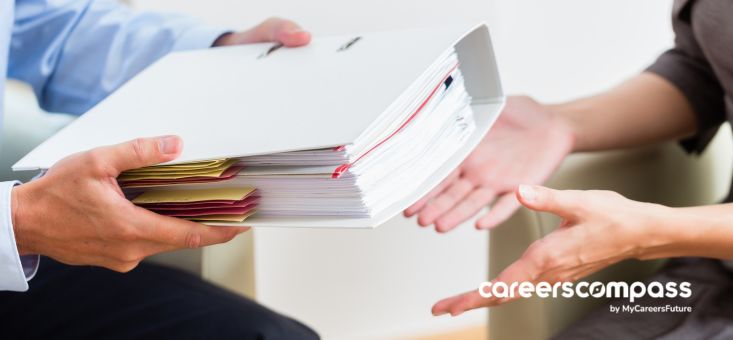So you’re taking leave for a fun vacation or to spend time with the family? That’s nice – after all, taking breaks from the office and work matters in achieving a work-life balance. And, a good time-out will help you return recharged and back to your best at work.
But of course, it becomes counter-productive if you don’t nail the holiday handover before you tap out from the office.
Imagine how your colleagues or boss will feel seeing the happy snaps on your social feed if they have to pick up after you, or if work stalls while you’re away. Or worse, just staring at your farewell post-it on their computer screen that has a smiley face and nothing else!
Here’s a list of quick tips for you to take note of after the boss approves that leave application.
1. Start early
Don’t delegate all the work on the last day, or worse, the last hour before your out-of-office notification activates on Outlook lah. Your colleagues might be away themselves, or busy with their own tasks without knowing they have to allocate time and bandwidth to cover for you. Factor in:
- How long you’re away
- How familiar your colleague is with what you do
- What’s in your inbox that needs covering while you’re away
If you’re taking just a day off, that’s not too bad, but if you’re going on a two-week vacation to the south of France, give your team and direct colleagues a one to two-week heads up, at least.
2. Drop a handover email to your colleague and your boss
Sure, have a verbal conversation with your colleague who’s covering you while you’re away sipping mai tais on the beach, looking at cool artwork in a gallery, or simply feeding your screaming kids gelato while trying to keep them from staining that new tee shirt you bought for them (yes, the writer for this piece is a parent).
But even after that, it’s best to craft out a simple email to the colleague and CC your boss in because, let’s face it, we’re all human and sometimes people forget things. Plus, it makes their life easier when you’re away to just read that email, rather than having to send an apologetic message to you that starts with: “Paiseh, I know you’re on leave, but…”
Here’s what to include in the email:
- What ongoing work/projects you’re doing
- What their deadlines are
- Who the key contacts are
- Access to emails or documents needed for background or to move forward
3. Record and screengrab
If your work involves some technicalities, such as the use of certain programs, or you just need to give your colleague a 101 session and worry they’ll forget, why not just save time on lengthy descriptions and use screenshots and short recordings?
You can simply do a step-by-step with tools such as Snagit, Screenrec, or for a free option, Greenshot or the Windows snipping tool.
4. Don’t forget your out-of-office email
Don’t just type ”Thanks for your email and see you when I’m back”!
Make sure your email includes a return date and your covering colleague’s email. Block off your calendar for the days you’re away, so colleagues don’t schedule you for meetings and then wonder why you’re not on the Skype/Teams/Zoom call, or in the boardroom 15 minutes into the meeting.
It’s also not a bad idea to let clients or vendors you work with also know you’re away and let them know the email of your covering colleague. You know, just in case something urgent or bad happens like your office server gets flooded in a monsoon (you laugh, but this really did happen to our writer).
5. Last but certainly not least, don’t dump
So while it’s tempting to use your long leave to dump work or tasks you’ve been avoiding, don’t. That long list of data entries you’ve been avoiding, because it’s long and tedious, is going to be long and tedious to your colleague as well. Don’t forget, he/she will be juggling their own work while you’re happily on holiday.
Imagine how they’ll feel, and remember, your unprotected coffee cup sitting on your desk isn’t that far from the toilet. Do your own darn saikang, don’t dump it on them.















